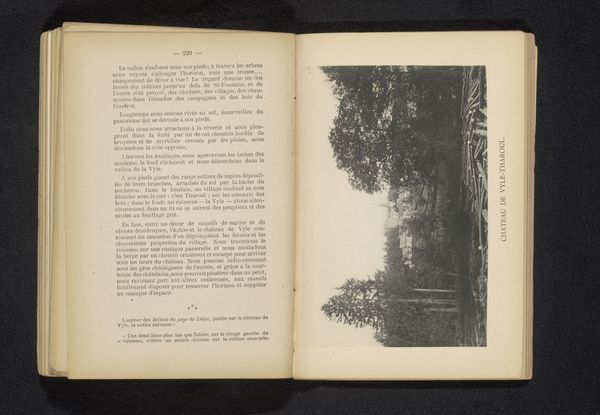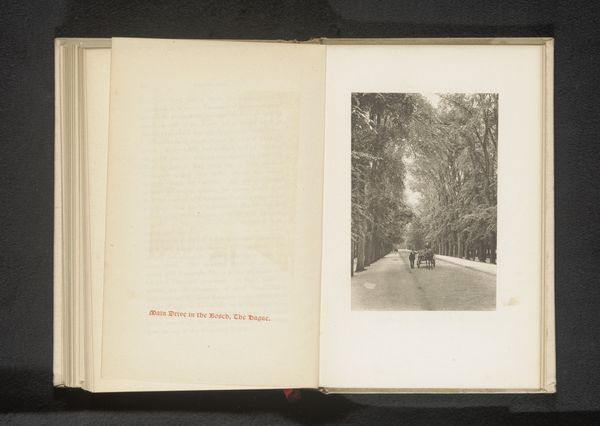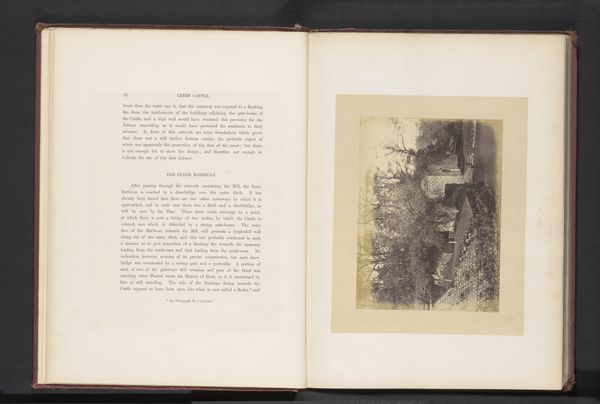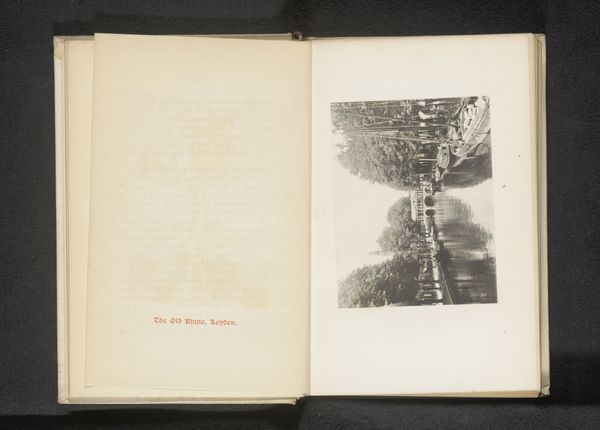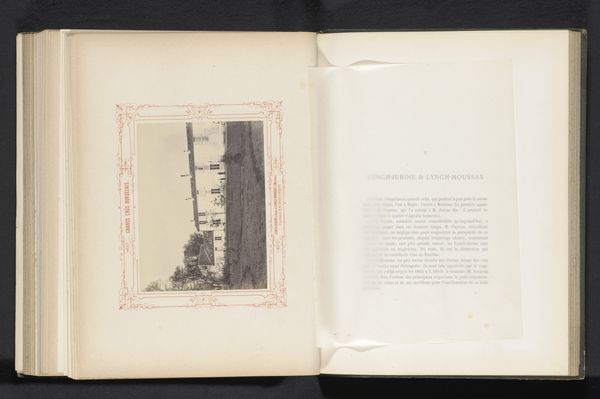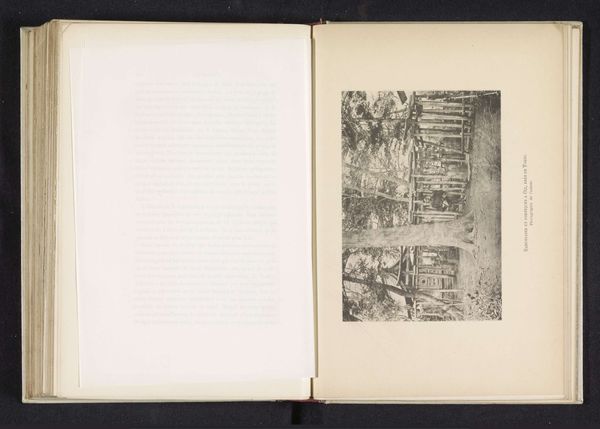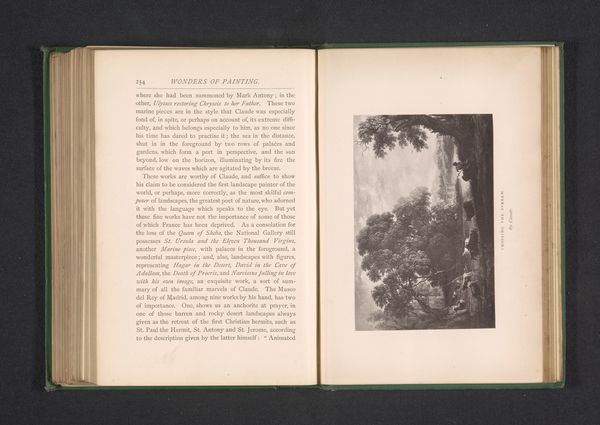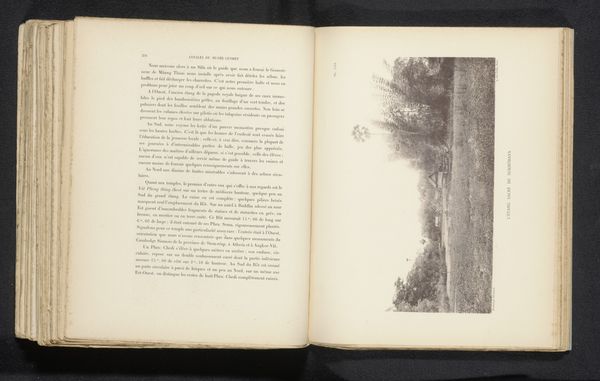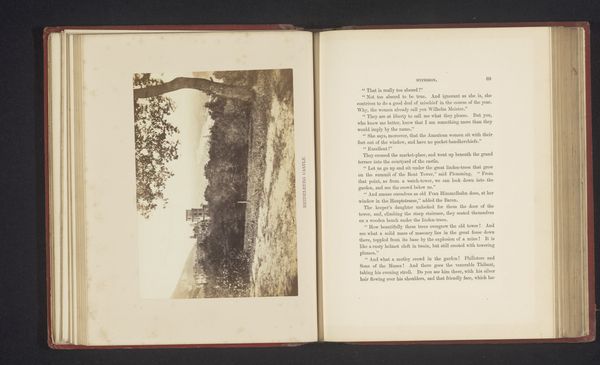
print, photography
#
aged paper
#
homemade paper
#
paper non-digital material
#
paperlike
# print
#
sketch book
#
hardpaper
#
landscape
#
paper texture
#
photography
#
personal sketchbook
#
journal
#
cityscape
#
paper medium
Dimensions: height 109 mm, width 85 mm
Copyright: Rijks Museum: Open Domain
Curator: We’re looking at "Gezicht op de Nieuwegracht te Utrecht," a print from before 1894, displayed as part of an open sketchbook. The opposing page bears a title: “The New Canal, Utrecht." Editor: It's a serene scene. The photographic print has soft gray tones; its placement feels deliberately off-center on the right page, drawing immediate focus. Curator: Yes, the materiality here is quite evocative. The aged paper suggests both the passage of time and the active life of this sketchbook. We see evidence of a physical, handcrafted object meant for personal documentation. This pre-dates mass-produced, high-resolution photography. Editor: Indeed. It speaks to a period where images held a different weight. The canal itself would've served not just as a waterway but as a locus of social interaction and economic activity. Who lived along its banks? How did their lives intersect with this seemingly peaceful view? The image is an unedited peek into everyday urban life in Utrecht, one absent of a purely commercial intent. Curator: That's a crucial point. There's also the process of creating and reproducing this print. From preparing the chemicals, transferring the image to the paper, developing the print, and meticulously integrating into the layout of this book. How do these physical interventions impact our interpretation of the landscape? Editor: I see this cityscape as more than an isolated scene; it embodies ideas about urban development and societal values prevalent at the time. Who had the leisure to create this sketchbook? What values are promoted or elided through its presentation and context? Curator: Precisely. By emphasizing these aspects, we avoid a romanticized view of art, recognizing the hands that made it possible, both visible and invisible. Editor: Thinking about it more critically enriches our comprehension, turning this sketchbook page into a vibrant historical record. Curator: Agreed, acknowledging its multifaceted construction gives agency back to the art itself.
Comments
No comments
Be the first to comment and join the conversation on the ultimate creative platform.



